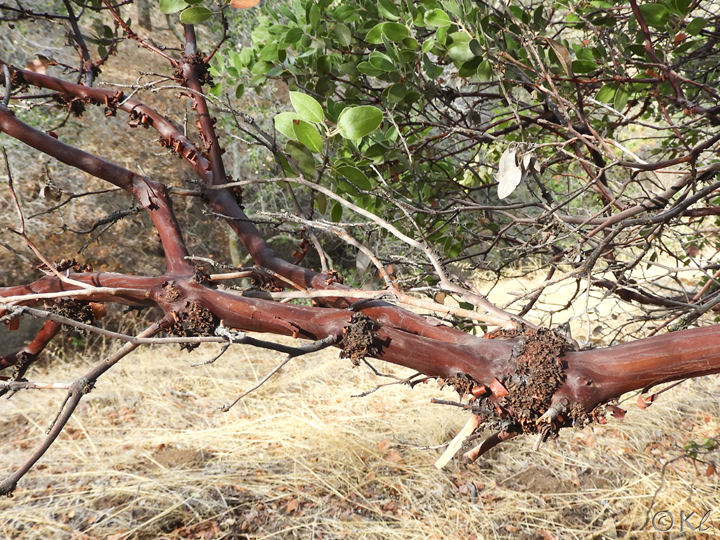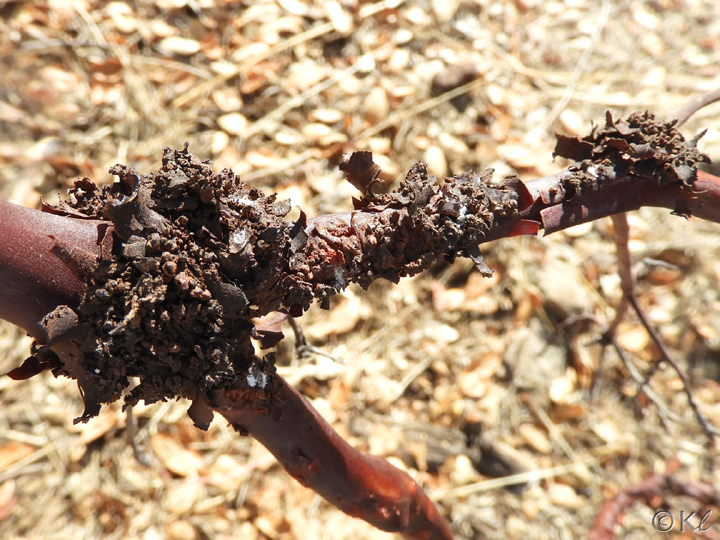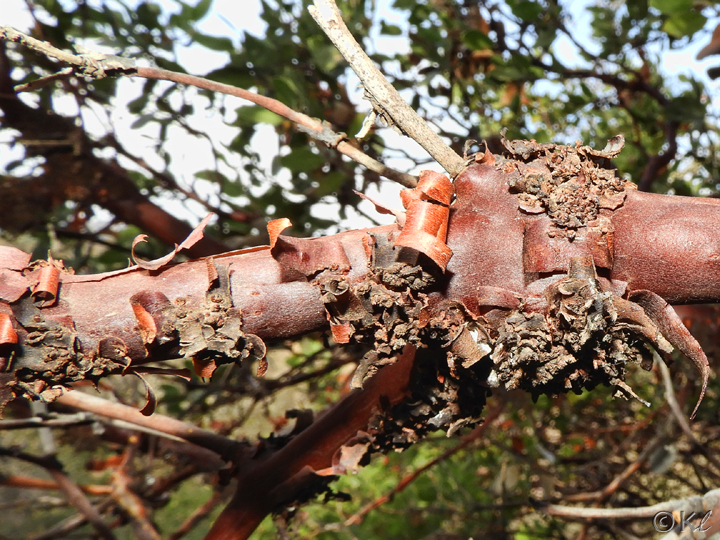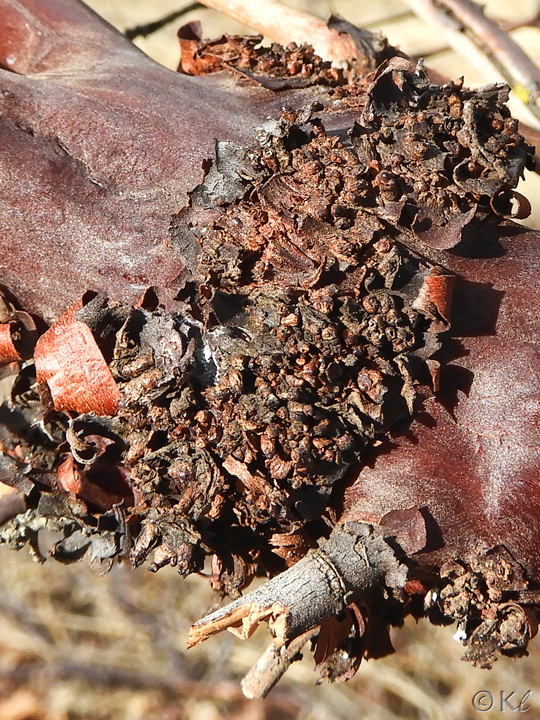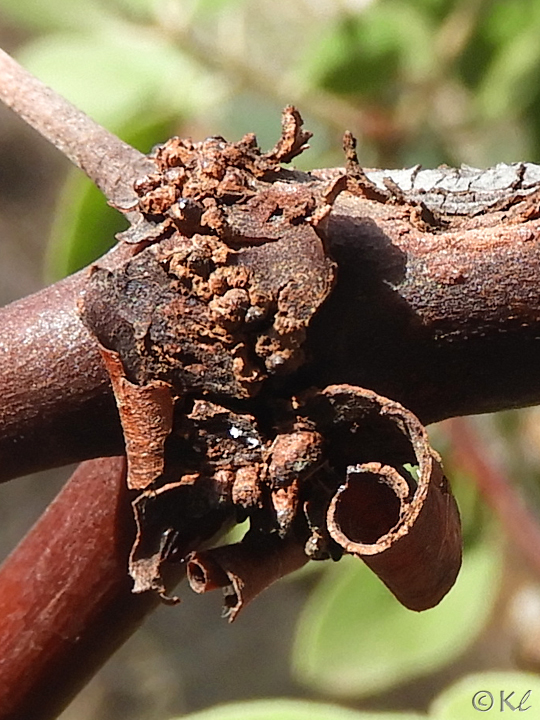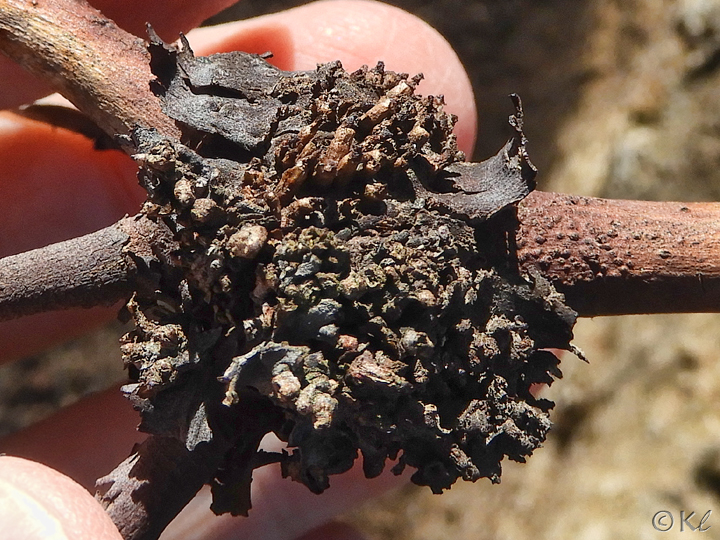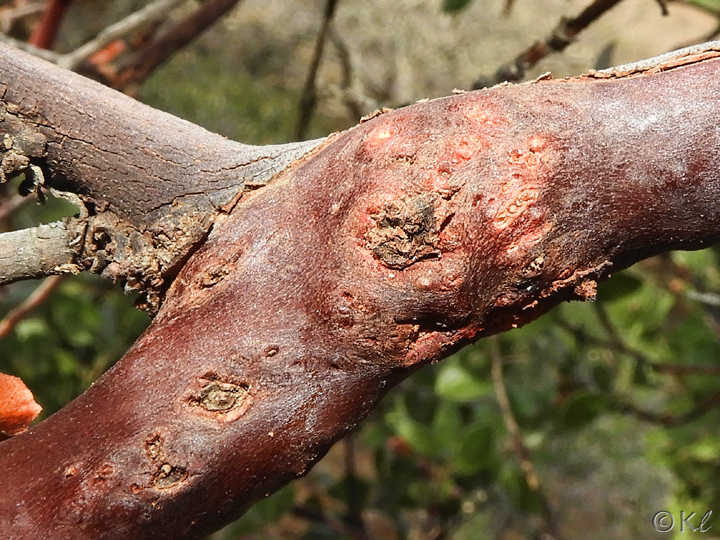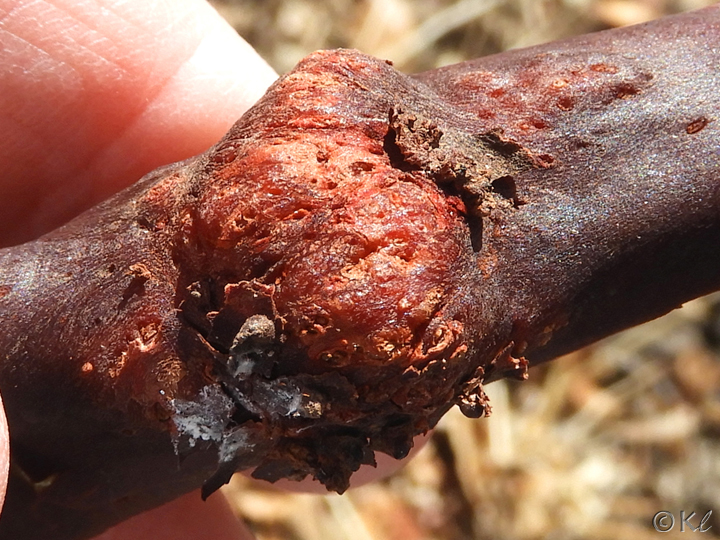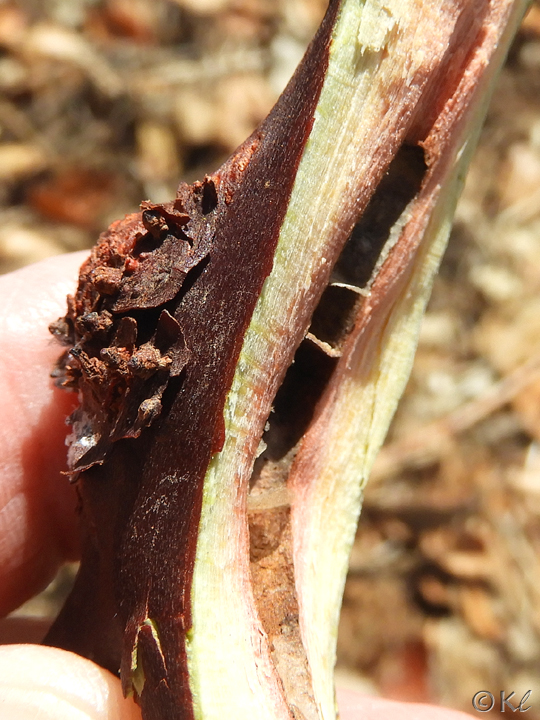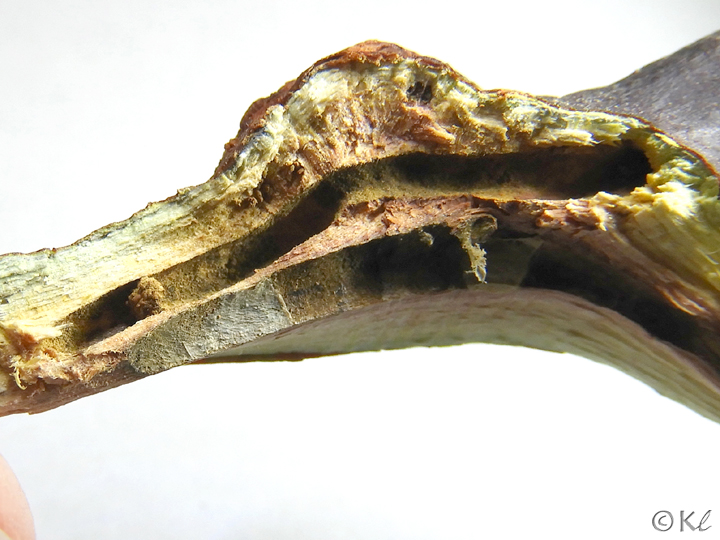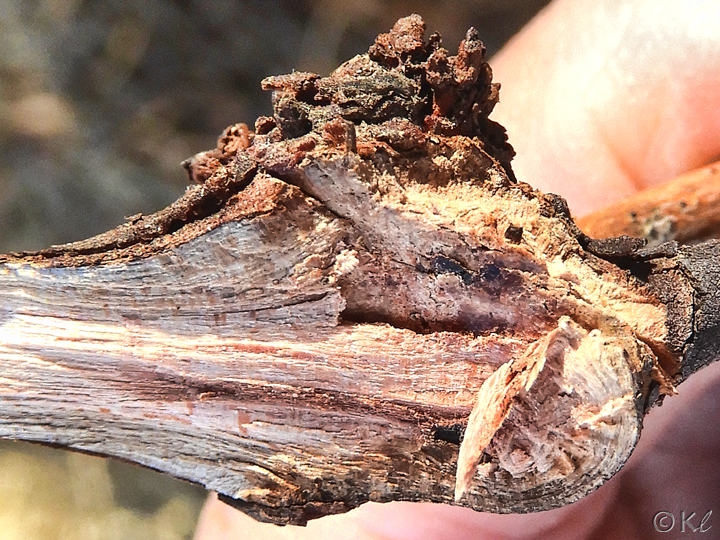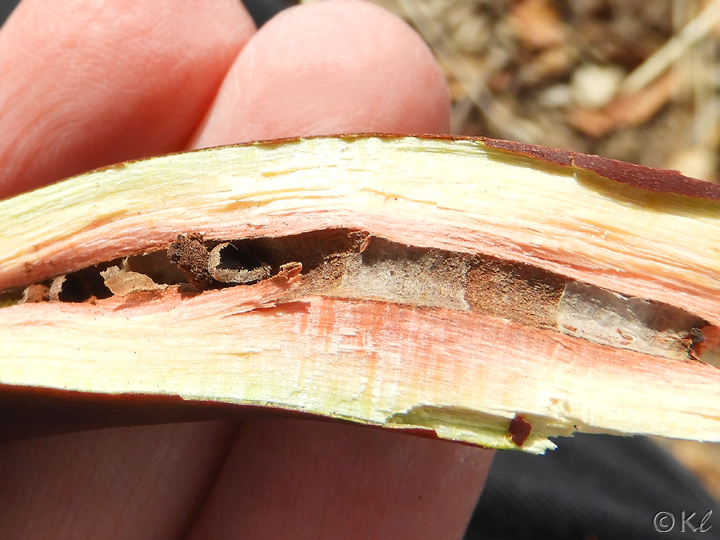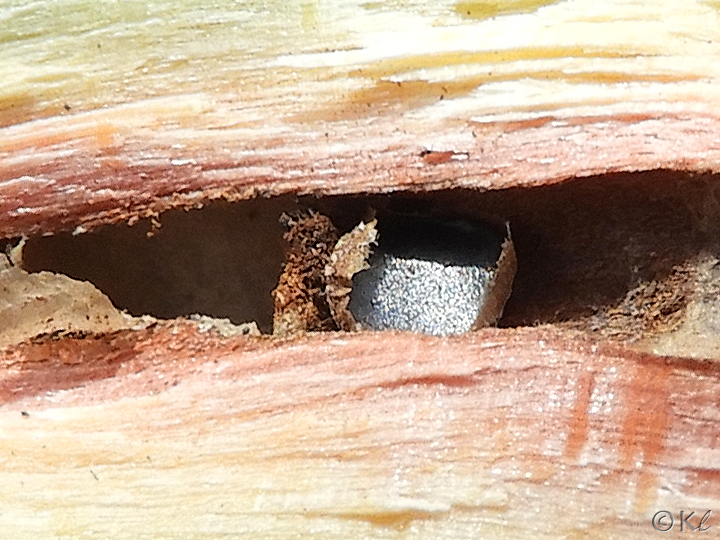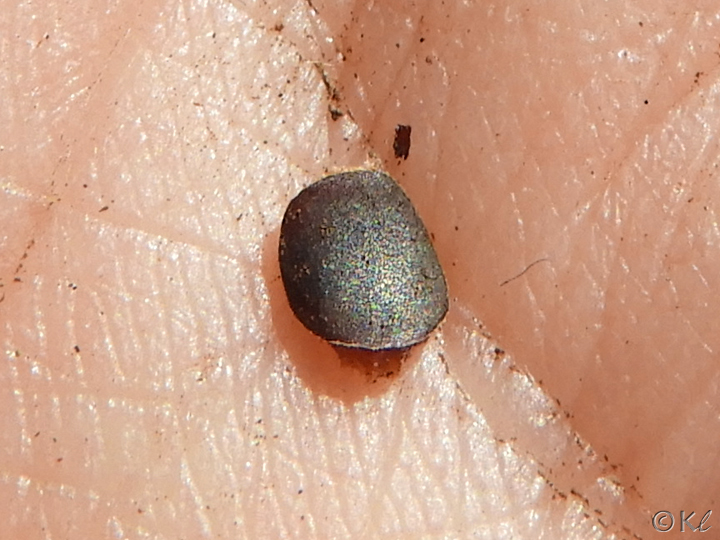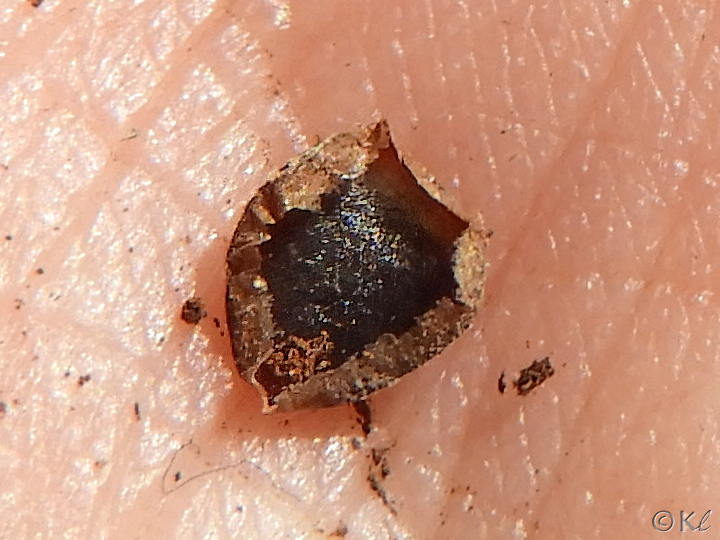
Galls, Diseases, and Pests - Unknown Manzanita Woodborers





|
These "galls" are likely a response to pests--in this case, woodborers. As one expert put it, manzanitas are the "poster child" for disturbance response in plants found in California. "Disturbance response" means that they have built-in ways of regrowing after a calamity--like a wildfire. Some manzanitas have burls at ground level that will regenerate the plant after a fire. In this example, burl-like tissue growth is happening in the branches. Upon opening up the branch where the growth is occurring, I found bores through the branch and woodborer larvae. So the speculation is that because the plant was "disturbed" by the woodborers, it kicked into survival mode, and that caused new and unusual tissue growth on the manzanita.
